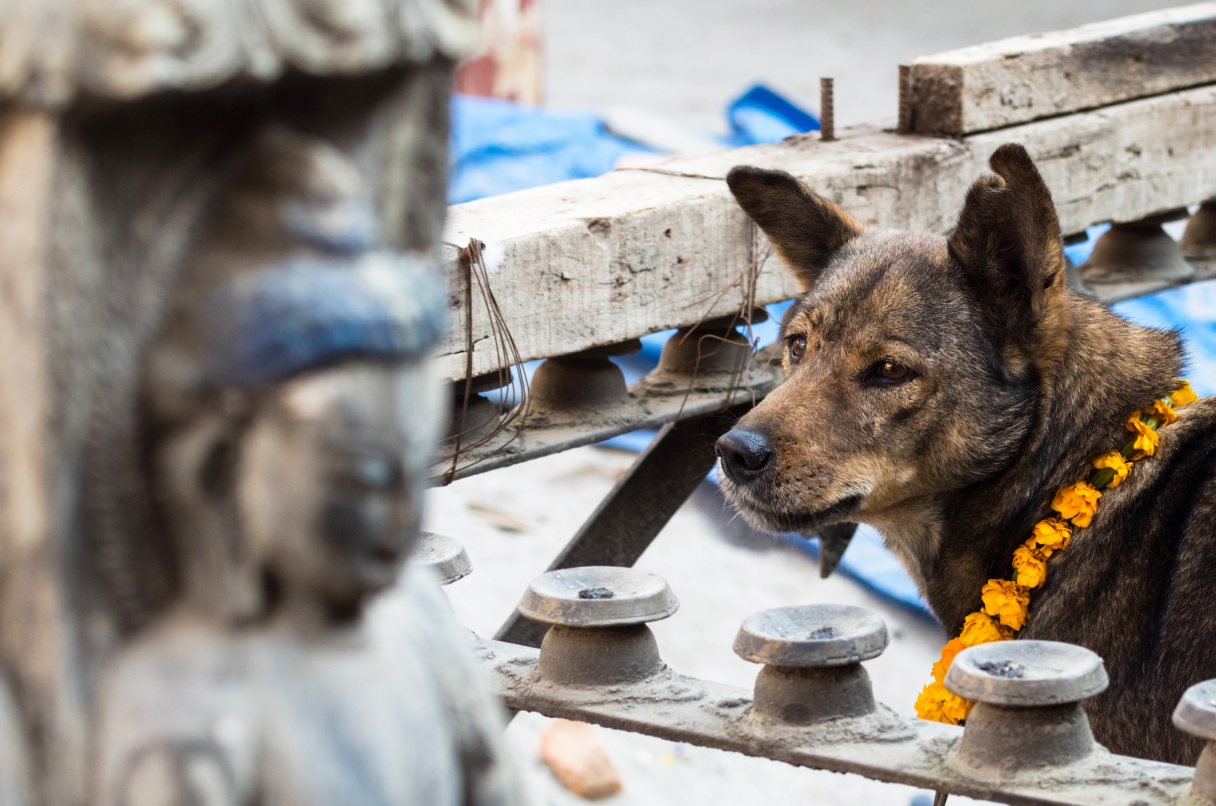Winter festivities around the world
We look at winter festivities from around the globe.

The Christmas season is in full swing, and we’re feeling festive!
With clients and workers operating in so many diverse locations - Mauve offers global employment solutions in over 150 countries worldwide - there are many winter traditions to appreciate. Let’s take a look at a few of the wonderful winter festivities around the world.
Switzerland
In Switzerland, Santa Clause, known as Samichlaus, arrives on December 6th, St. Nicholas’s Day, marking the commencement of the Christmas season. Dressed in his classic red ensemble, he makes his entrance on a donkey, as opposed to a reindeer, and Samichlaus and his donkey are not alone!
They are accompanied by Schmutzli. He is clad in dark robes with his face obscured or covered by a dark beard, and his job is punishing disobedient children with a broom. This may sound a little grim but it’s a light-hearted tradition that children think is great fun.
Celebrations are held across Switzerland marking the beginning of Christmas and Samichlaus’s arrival, the best known of which is Küssnacht, held in Klausjagen.
Malawi
With over 80% of the population of Malawi identifying as Christian, Christmas is widely celebrated. People gather in churches on Christmas Eve to sing carols – and on the day, children will reenact the Nativity in church.
Children also lead the celebrations outside of church; wearing new clothing, often calling from door-to-door, performing for family members, and, sometimes, even using homemade instruments.
Christmas is one of the few times of year where people indulge in eating rice and chicken, and a traditional drink called Thobwa is popular.
Malawi’s New Year celebrations are called Chilimike, and are marked by street parties, dancing, traditional music, fireworks, and traditional foods and drinks.
New Zealand
Christmas traditions in the Southern Hemisphere vary hugely from the North due to the climate. For many New Zealanders, Christmas dinner is a barbeque on the beach! Christmas dishes tend to be cooler offerings, such as seasonal fruits and salads, fresh seafood, and pavlova for dessert.
Traditional New Zealand Christmas celebrations are influenced by traditions from Britain, North America, and the indigenous Māori population.
The Pōhutukawa tree is commonly used in New Zealand Christmas decorations and referenced in local music and culture. The native tree, famous for its red flowers, blooms from December to January and is deeply important in indigenous Māori culture.
In Māori culture, it is believed that spirits of those who have passed begin their journey to the afterlife of Hawaiki – the land where all life begins and ends in Polynesian lore, from an ancient Pōhutukawa tree in Cape Reigna.
Argentina
In Argentina, children receive their gifts on January 6th, Three Kings Day, the day on which the Three Kings visited the baby Jesus and bestowed upon him their gifts of gold, frankincense, and mer. Children will leave water and hay outside for the Kings’ horses and, in turn, the Kings will leave gifts in the children’s shoes.
But just because presents wait until January, doesn’t mean there aren’t plenty of Christmas celebrations. Houses are decorated in traditional colours of red and white, and fireworks are let off at midnight on Christmas Eve, along with paper lanterns which are lit and sent into the sky.
Ireland
Ireland, a traditionally Catholic country for centuries, celebrates Christmas in many of the broader traditional ways – Christmas trees, decorations, carolling, and Santa Clause. However, Ireland’s pagan past still makes an appearance in its winter festivities.
Samhain celebrates the winter solstice. To this day, on November 1st, people gather at Newgrange, a Neolithic passage tomb in Country Meath, the architecture of which aligns with the sunrise on the dawn of the winter solstice.
In ancient Ireland, Samhain was celebrated by feasts, bonfires, and sacrifices – and the burial sites were thought to be portals to the Otherworld, the realm of Celtic deities and those who have died.
Wren’s Day, or Lá an Dreoilín in Irish, is an Irish tradition held on December 26th in some parts of Ireland and in other countries such as the Isle of Man. The custom involves the hunting of a wren - though now a fake wren is used - which is then tied to a pole, and paraded through the town accompanied by ‘strawboys,’ people dressed up in straw suits, masks, and colourful clothing.
Lá an Dreoilín is thought to have originated as a mid-winter sacrifice in honour of Samhain, the traditional mid-winter pagan festival. The wren symbolised the past year, and was commonly used in druid rituals.
Another tradition celebrated in Ireland on January 6th is known as Nollaig na mBan, or Women’s Christmas, and is traditionally the day that women rest after the business of the festive period, though we would hope that the jobs would be equally distributed nowadays!
Nepal
Nepal celebrates a number of winter festivities. Tihar is celebrated in October for three days, each day in honour of a different deity. On the first day, the crow is worshipped, as they are the harbinger of death. The second day is in honour of dogs, believed to be the custodians of Yama, the Hindu god of death and justice. And on the third day, offerings are made to Laxmi, the Hindu goddess of wealth.
Chhath is celebrated in early November in the Terai region, during which locals fast and offer food and prayers to the sun.
Maha Shivaratri is held in February and means ‘night of Lord Shiva'. Devotees visit temples to worship Shiva. Bhang, a traditional drink of milk and spices, is consumed during this festival, which is often witnessed by tourists in Kathmandu.
Wherever you are in the world, we’re wishing you a very happy holiday period, from all at Mauve.

Global payroll without a local entity: paying overseas employees compliantly
Learn how to pay overseas employees compliantly without setting up a local entity, by engaging global payroll services.


HR and Employer of Record (EOR): supporting employees globally
Discover how HR and Employer of Record (EOR) services support employees globally – ensuring compliance, consistency, and a positive experience across international teams.
